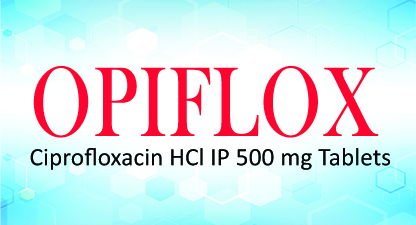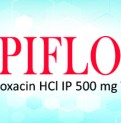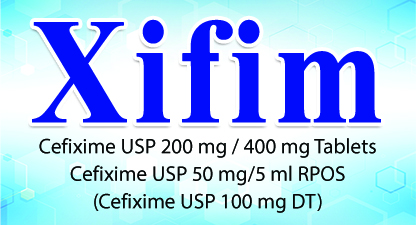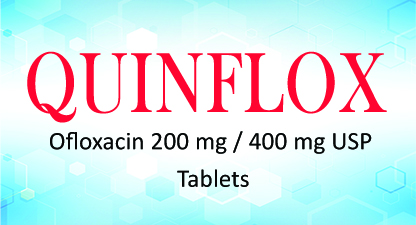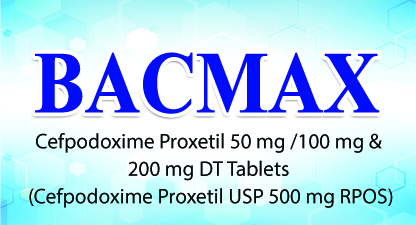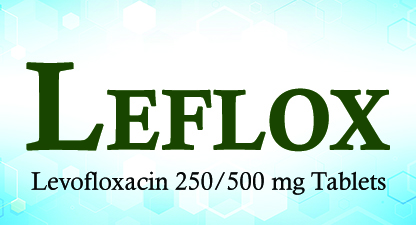OPIFLOX
Ciprofloxacin belongs to the fluoroquinolone drug class of antibiotics considered to be a second-generation fluoroquinolone. It is a broad-spectrum antibiotic that is active against both Gram-positive and Gram-negative bacteria.
- Categories : Antibiotics
- Share Now :
OPIFLOX
Generic Name: Ofloxacin
Therapeutic Category: Antibiotics
Pharmacological Class: Fluoroquinolone
Composition: Each film coated tablet contains Ciprofloxacin HCl IP 500 mg.
Pregnancy Category: C
Presentation: Available in the pack size as 10 tablets X 10 blisters
Mechanism of Action
Its mode of action depends on blocking of bacterial DNA replication by binding itself to an enzyme called DNA gyrase, which allows the untwisting required to replicate one DNA double helix into two. Ofloxacin acts on DNA gyrase and topoisomerase IV, enzymes which, like human topoisomerase, prevents the excessive supercoiling of DNA during replication or transcription. By inhibiting their function, the drug thereby inhibits normal cell division.
Notably the drug has 100 times higher affinity for bacterial DNA gyrase than for mammalian.
Indications
- Urinary Tract Infections
- Acute Uncomplicated Cystitis* in females
- Lower Respiratory Tract Infections
- Chronic Bacterial Prostatitis*
- Acute Sinusitis
- Skin and skin structure infections
- Bone and joint infections
- Intra-abdominal infections
- Infectious diarrhea
- Plague*
- Urethral & Cervical Gonococcal Infections
Dosage
Route of administration: Oral
Urinary Tract Infections
Adults (18 years or older):
Acute uncomplicated: 500 mg once a day for 3 days
Mild/moderate: 250-500 mg twice a day for 7-14 days
Severe/complicated: 500 mg twice a day for 7-14 days
≥1 year: 10-20 mg/kg twice a day; individual dose not to exceed 750 mg for 10-21 days.
Safety and efficacy not established for less than one year
Lower Respiratory Tract Infections: 500 mg twice a day for 7-14 days
Chronic Bacterial Prostatitis (Caused by Escherichia coli or Proteus mirabilis): 500 mg 12 hourly for 28 days.
Acute Sinusitis: 500 mg twice a day for 10 days
Skin/Skin Structure Infections, Intra-abdominal infections: 500 mg twice a day for 7-14 days.
Bone & Joint Infections: 500 mg twice a day greater than 4-6 weeks.
Infectious Diarrhea: 500 mg twice a day for 5-7 days.
Plague:
Adults (18 years or older):500-750 mg twice a day for 14 days.
Children (up to 17 years of age): 15 mg/kg twice a day for 10-21 days.
Pharmacokinetics
Absorption: Rapidly and well absorbed from the gastrointestinal tract after oral administration. The absolute bioavailability is approximately 70%.
Protein binding: Approximately 20-40%
Metabolism: Hepatic
Route of elimination: Renal
Half-life: 4 hours
Adverse Effects
- Common side effects include: diarrhea, dizziness, drowsiness, headache, stomach upset, abdominal pain, nausea/vomiting, blurred vision , nervousness, anxiety, agitation, sleep problems (insomnia or nightmares), and rash.
- Others: Sudden pain, snapping or popping sound, bruising, swelling, tenderness, stiffness, or loss of movement in any of your joints; watery or bloody diarrhea; confusion, hallucinations, depression, unusual thoughts or behavior; seizure (convulsions); severe headache.
Contraindications
OPIFLOX contraindicated in the following situations:
- Hypersensitivity to ciprofloxacin or any other member of quinolone class or to any of the components of the formulation.
Precautions
Risk of following is increased with administration of Ciprofloxacin.
- Tendinitis* and Tendon Rupture
- Peripheral Neuropathy
- Central Nervous System Effects
- Exacerbation of Myasthenia Gravis*
Drug Interactions
- Tizanidine: Concomitant administration of Opiflox with tizanidine is contraindicated.
- Magnesium or aluminum antacids: It turns ciprofloxacin into insoluble salts that are not readily absorbed by the intestinal tract.
- Oral anti-diabetic drug: May potentiate glucose lowering effect.
- Anti-coagulant drugs: Increase anti-coagulant effect.
*Terminologies:
Cystitis: An inflammation of the bladder.
Prostatitis: The inflammation (swelling) of the prostate gland.
Plague: An infectious disease caused by the bacterium Yersinia pestis.
Tendinitis: The inflammation of a tendon, most commonly from overuse but also from infection or rheumatic disease.
Myasthenia Gravis: A chronic autoimmune neuromuscular disease that causes weakness in the skeletal muscles, which are responsible for breathing and moving parts of the body, including the arms and legs.

